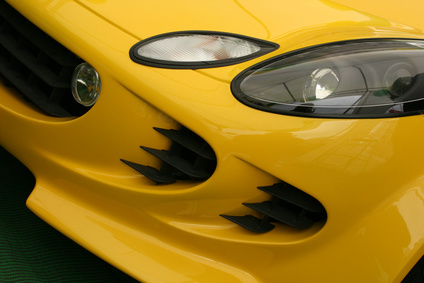
Painting an automobile is a time-consuming process that can have your car out of commission for as much as a week. One way to save time while not stinting on the look of the job is by using a single-stage paint instead of a two-stage painting system. Unlike the method of using a two-stage color coat followed by a clear coat, a single-stage paint includes the glossy clear within the color itself. When it dries, the single-stage paint shines to a high gloss. This removes the need for multiple layers of clear coat, allowing you to enjoy your new paint job all the sooner.
Clean the surface of the car where you intend to apply the paint with a prepaint cleaner/degreaser. Spray the car with the cleaner and then wipe away any dirt or debris that’s present with a clean cloth. Wait for the cleaner to dry before applying the paint. There is no rinsing necessary.
Place masking paper and tape over any areas you do not want to paint. Press the tape tightly in place, making sure that there are no gaps along the edge which may allow paint underneath.
Wipe the surface of the car with tack cloth to remove all trace of dust.
Fill the paint reservoir of your paint sprayer with an epoxy primer. Set the air pressure for the sprayer to between 40 and 50 psi for a gravity- or siphon-feed gun, or between six and 10 psi for an HVLP sprayer.
Spray the car surface with the primer. Spray the edges of the auto body panel, then work the primer onto the hood in a side-to-side motion. Apply the primer in rows until you’ve covered the entire panel before moving onto the next car panel. Allow the primer to dry 20 minutes.
Fill the paint sprayer with the single stage paint. Follow the same application method you used for the primer. Overlap each applied paint row by 50 percent to ensure complete and even coverage. Wait 15 minutes for the paint to begin drying.
Use the same coverage process with a second and then a third coat of paint. Allow the paint to dry completely for 24 hours before using the vehicle.